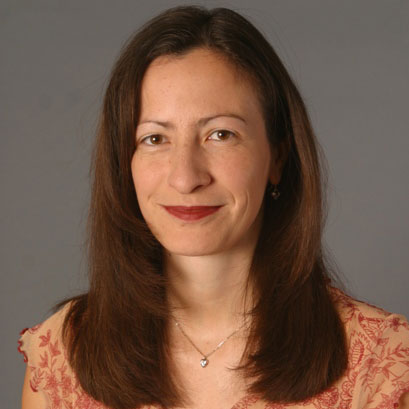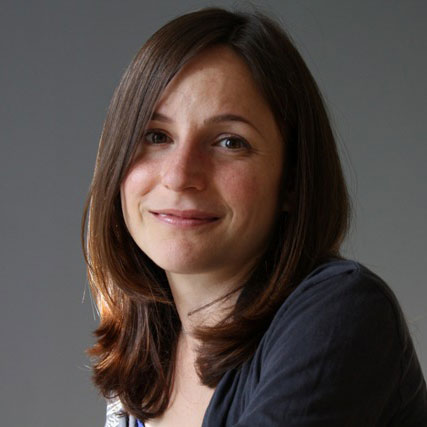The New Yorker Festival: For the Little Old Lady in Dubuque and Everywhere Else
The New Yorker magazine’s founding editor Harold Ross once famously described his fledgling publication (founded in 1925) as being, “not for the little old lady in Dubuque.” This comment was meant to distinguish The New Yorker’s urbane and knowing tone from that of the wholesome general interest magazines, like the Saturday Evening Post, that abounded at the time.
Today, the little old lady in Dubuque probably has an advanced degree and a Facebook page — and today's New Yorker is for her and everyone else. It demonstrates this each year with its annual New Yorker festival — the 12th one begins on Friday — which spills the contents of the magazine onto the streets and sites of the city in a series of panels, tours, and talks.
“It’s a way of presenting a live version of the magazine itself,” said the magazine's fiction editor Deborah Treisman. “When you go to the festival, you can actually see the person you’ve been reading and reading about.”
After it got through its gawky cocktail circuit adolescence, The New Yorker developed a reputation for think pieces on almost any subject that could be thought about — it devoted its entire August 31, 1946 issue to John Hersey’s examination of Hiroshima — and that sense of multiple domains is evident in the festival line-up this weekend.
On the literary front, Treisman is guiding T.C. Boyle, Joyce Carol Oates, and George Saunders in an exploration of their “dark side.” Different as they are, she feels they have a common sensibility: “They’re aware of what’s happening in the world and how to pull those elements into fictional work and give them meaning.”
And dark is relative, “None of them has any fear of the misery that’s out there in the world, but they do have a redemptive approach to that misery,” Treisman said.
Treisman’s other panel, “The Writer’s Writer,” gazes more inwardly at the craft and she’s looking forward to asking Jeffrey Eugenides, Nicole Krauss and Jhumpa Lahiri about their go-to authors. Perhaps staff writer Rebecca Mead’s one-woman exploration of a George Elliott blockbuster, “Middlemarch and Me,” can be thought of as a companion event.

For WNYC's interview with Deborah Treisman (pictured right), click on the link below.
Media itself has always been a dominant topic for the magazine — at least since David Remnick took over the editor’s chair — and events in this silo include the panel “Beyond 3-D”, and talks with David Cronenberg, Amy Poehler and Paul Giamatti, among others.
Tad Friend, who covers Hollywood for the magazine, was prompted by his sense that independent film industry is losing momentum to assemble a panel of actors who’ve moved to the small screen. “Bravura Television” will feature Laura Dern, Edie Falco, William H. Macy, and Jeremy Irons.
Friend says, perhaps heretically, “I think most people would say that the most enjoyment they get from any kind of viewing experience these days is from [premium or cable] television...”
And viewers are not alone.
“I was talking to Bill Macy and he was saying that this [his role as freewheeling Frank Gallagher on Showtime’s “Shameless”) was the biggest acting challenge he’s ever had," Friend said, "that in every single episode there’s something that requires him to go places that he hasn’t gone.”
 For WNYC's interview with Tad Friend (pictured right), click on the link below.
For WNYC's interview with Tad Friend (pictured right), click on the link below.
For another experience of an actor pushing the limits, there is the possibility of seeing Ralph Fiennes' contemporary "Coriolanus" — the perfect transitional role, one has to think, for a man who has been living in the skin of Lord Voldemort for decade.
Hersey’s Hiroshima legacy remains rich at The New Yorker and there are panels exploring its coverage of war and other conflicts, politics, and a changing America.
That America figures, too, in the idea behind “Alternative Realities,” which groups the genre-bending authors Karen Russell, Gary Shteyngart, and Colson Whitehead.
Russell, author of the short story collection St. Lucy's Home for Girls Raised by Wolves and the novel Swamplandia, sees socially conscious fantasy or allegory as a kind of “Siamese twin” view of America as it might have been.
Works like Shteyngart’s Absurdistan and Whitehead’s Zone 1 help us to see our accelerated world by “changing the palette” a little, she says: “Sometimes I think you can see things in twilight lighting, or carnival lighting that are just occluded. Things have become so chaotic and strange. I do think that technological acceleration is a big part of that too, so for me fiction feels like a place where you can sort of slow down and take a look at how we're relating to each other now.”
 For WNYC's interview with Karen Russell (pictured right), click on the link below.
For WNYC's interview with Karen Russell (pictured right), click on the link below.
And, of course, there would be no New Yorker without New York, so there are a number of experiences available at the festival: Frank Gehry will conduct tour of his first skyscraper; Jacob Collins will let Adam Gopnik take a peak at his studio; and the magazine’s ace eater, Calvin Trillin, once again leads his popular tour of his favorite Chinatown and Greenwich Village eateries.
Those interested in The New Yorker as an institution unto itself will be dropping by “A New Yorker Night with the Moth,” and those interested in joining the fun can chance their arm during “The Cartoon Caption Game.”
Harold Ross would have been astonished to see his sassy little magazine become the multi-platform media bastion it is today, but the festival, in some ways, celebrates both its past — as an intelligent glimpse of restless urban life — and its present, as a conductor of light from every corner of the globe.
The New Yorker Festival 2011 runs through Oct. 2. For a schedule, click here.